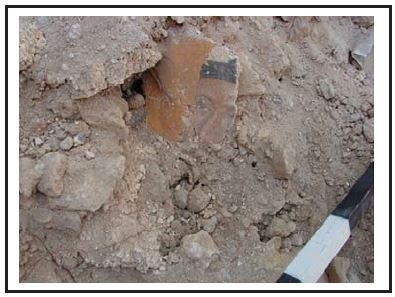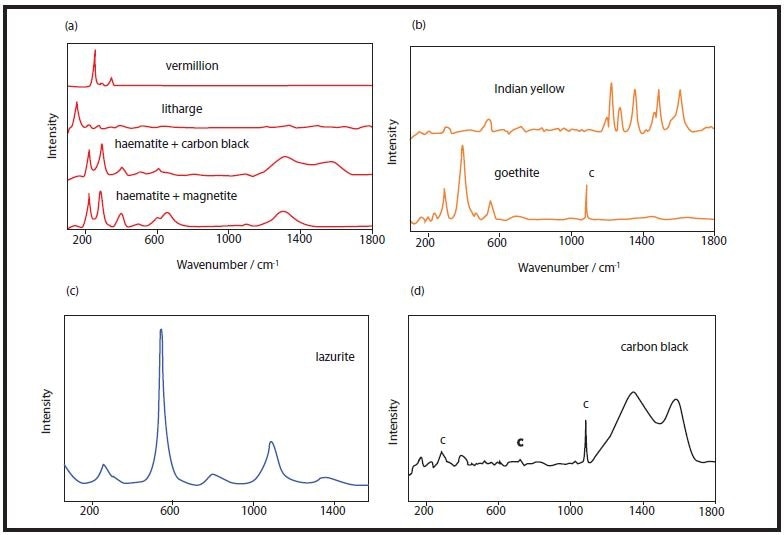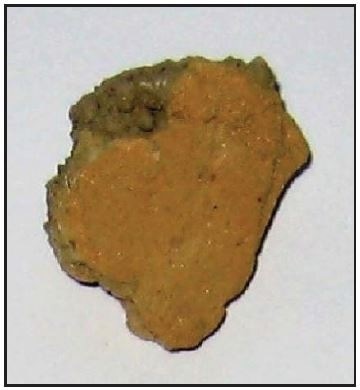Sponsored by HORIBAJun 12 2018
Situated in the center of Macedonia’s modern capital, Skopje, the medieval fortification Skopsko Kale (Skopje Fortress) served as the center of the Central Balkan Peninsula mainly between the 6th and 19th century. The Fortress served as an important military and administrative site for numerous competing powers throughout the Middle Ages, including the kingdoms of Byzantium, Samuel, Bulgaria, Serbia, and the Ottoman Empire.
Archaeological Excavation
In 1967, an extensive field research centered around the Skopje Fortress1 periphery was done in order to assess the feasibility of an excavation; finally, in 2007, a major excavation campaign was launched within the circumference of the Fortress. One of the most unique findings in the excavation was the discovery of church remains situated at a hilltop position within the fortification. While it was the only church unearthed during the excavation, its features and existence were heavily documented by traveler Philippe du Fresne-Canaye in as early as 1573. According to Fresne-Canaye, the old fortress of Skopsko Kale was visible upon entering the town, and an Orthodox Church stood within its premises2.
Stratigraphic methods of archaeological excavations and analysis of excavated main pottery suggest that the church was constructed during the second half of the 14th century. Findings also suggest that the church was subjected to two phases of renovation; however, stratigraphic methods failed to yield supporting data due to the interruption of cultural layers by recent interventions dating between the 19th and 20th century. Nevertheless, the two phases of renovation were still estimated to have occurred during the early Ottoman rule and during the 19th century, with the latter being documented by historic photography. Creating a reliable assumption regarding the first renovation is still subject to debate. This is because a major renovation phase of the Orthodox church during the Ottoman Empire, while situated inside an imperial and military center, was not strategic. Stratigraphic data, however, suggest another possible date of intervention: during the 16th century after a major earthquake in 15553.
Support for the chronology of events was obtained through a collection of scrapped fresco painting walls that were used as fillers for terrain elevation against the accumulation of rainwater. Additionally, fragments that feature similar colors and motifs were observed within the excavation site. They were, however, broken down into smaller pieces, implying that these fragments originated from a common source material3.

The foundation of the Mediaeval church – Skopsko Kale (Skopje For-tress)

A detail of an unearthed wall painting of a profane figure, later conser-ved and analysed by micro-Raman spectroscopy.
Results
Micro-Raman measurements were performed using a LabRAM Raman instrument. Fresco fragments were directly placed under the microscope and were analyzed using the He-Ne laser operating at 17 mW 66 nm. Additionally, pigments were analyzed prior to the conservation of fresco fragments. A select group of Raman spectra analysis is presented in the figure below.

Raman spectra of the analysed pigments of small fragments of wall pain-tings: (a) red pigments; (b) yellow pigments; (c) blue pigment; (d) black pigment (c = calcite)
The table below shows a summary of identified pigments from the wall paintings. Red pigments were found to be vermilion, hematite, and litharge4-6; blue pigments were lazurite; black as carbon black; and white was calcite. Meanwhile, two yellow pigments were found to be goethite and Indian yellow, a pigment estimated to be utilized in Macedonian society between the 15th and 19th century4.
Table 1. Pigments identified in the fragments of the wall paintings from the sacral building at Skopsko Kale (Skopje Fortress).
| Color |
Pigments in use since Antiquity |
Other pigment |
| red |
vermilion, haematite, litharge |
|
| yellow / ochre |
goethite |
Indian yellow (15th - 19th c.) |
| blue |
lazurite |
|
| black |
magnetite, carbon black |
|
| white |
calcite |
|
Indian yellow is made up of magnesium euxanthate (C19H16O11Mg • 5H2O). Most likely, it originated from Persia and was introduced in India during the 15th century. The Indian yellow pigment is common among paintings from the Mughal Period. While Europeans have already been aware of the pigment since 1780, it was mostly used in watermedia paintings8 but rarely elsewhere during the 19th century8. In Macedonian society, however, the Indian yellow pigment is thought to have been brought by Persians during the Ottoman period.
Below is an example of an analyzed wall painting fragment with an Indian yellow pigment. The use of such color in wall paintings of the Orthodox church within the Fortress could support the tentative dating of the renovations done to certain parts of wall, with the time frame not occurring before the 15th century when Indian yellow was introduced as a pigment4,7-9.

Wall painting fragment with Indian yellow pigment
Conclusions
The current study of medieval pigments using micro-Raman spectroscopy provides relevant information concerning the organic and inorganic pigments utilized in wall paintings in the remains of the Orthodox church within Skopsko Kale. Generally, pigment varieties were found as well as their allocation to various time periods. This confirms archaeological assumptions that the sacral building underwent reconstruction during the 19th century10. A significant discovery of the use of Indian yellow pigment showed that reconstructions could have also been done between the 15th and 19th century4,7-9.
All data discovered during the study promote a salient stage in the emergence of the Skopje Fortress. While the Ottoman Empire fully applied its political and military power during its rule, the sacral renovations that were facilitated in several phases confirm the coexistence of the Muslim and Christian community within Macedonia.
References and Further Reading
- Skopje Fortress – Archaeological Excavations 2007 and exhibition, (J. Shurbanovski Ed.) Museum of the City of Skopje, Skopje (2007).
- A. Matkovski, Makedonija vo delata na stranskite patepisci (1371–1777), Skopje (1991) 208.
- Lj. Dzidrova, B. Minceva-Sukarova, V. Tanevska and O. Grupce, Bal-kan Symposium on Archaeometry, Book of Proceedings, p.83, Ohrid, Re-public of Macedonia, September (2008).
- I. M. Bell, R.J.H. Clark, P.J. Gibbs, Raman Spectroscopic Library of Natural and Synthetic Pigments (pre- ~1850), Spectrochim. Acta A 53 (1997) 2159–2179.
- Spectral ID (3.02), Thermo Galactic (Horiba Jobin-Yvon Database of Raman Spectra).
- F. Froment, A. Tournié, Ph. Colomban, J. Raman Spec., 39 (2008) 560–568.
- J.R. Barnetta, S. Miller, E. Pearce, Optics & Laser Technology 38 (2006) 445–453.
- http://www.handprint.com/HP/WCL/pigmt1b.html#magnesium (acces-sed January 2009).
- http://www.multimediaarts.com/watercolors/colrhist.htm (accessed Ja-nuary 2009).
- B. Minčeva-Šukarova, V. Tanevska, Lj. Džidrova, O. Grupče, K. Ristov, IRUG – 8, The Eighth Biennial Conference of the Infrared and Raman Users Group, Book of Abstracts, p.80, Vienna, Austria, March (2008).

This information has been sourced, reviewed and adapted from materials provided by HORIBA.
For more information on this source, please visit HORIBA.